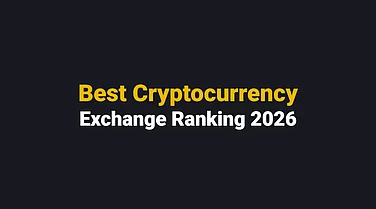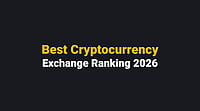Over the last decade, DeFi rapidly evolved from a niche experiment to one of the most disruptive innovations in recent economics. DeFi was meant to change how people interact with money: cut out middlemen, get transactions automated by means of smart contracts, and make financial tools open to all.
But as that ecosystem expanded, it increasingly faced some of the same challenges that TradFi had taken decades to learn how to manage: market volatility, regulatory uncertainty, and security loopholes. And that realization opened doors to a new model now known as Hybrid Finance, or HyFi — a meeting of DeFi's innovation and TradFi's reliability.
DeFi learned that while decentralization creates efficiency, equally important are stability, compliance, and trust. Hybrid Finance represents the synthesis of those lessons: taking the transparency of blockchain and mixing it with the governance and safeguards from traditional systems.
This article explores what some of the most important lessons DeFi learned from TradFi were, how those lessons shaped the bedrock of Hybrid Finance, and why this hybrid approach can define the future of global financial ecosystems.
Risk Management: Learning the Value of Structure
Conventional finance works with the principles of risk assessment built into it through centuries of credit evaluation, diversification into assets, and statutory capital reserve requirements. In this way, mechanisms are put in place that ensure one institution's failure doesn't destabilize an entire market.
At first, DeFi took a different route: many early projects seemed to have based themselves around the maxim that "code is law"-that smart contracts alone could prevent fraud or mismanagement. Reality had a way of setting things straight, however. Flash loan exploits, liquidity collapses, and protocol hacks proved that technical automation doesn't replace human oversight.
What DeFi learned:
Auditing is important. DeFi protocols, like banks, should be audited by cybersecurity and blockchain experts.
Insurance mechanisms are paramount: Funds should be safeguarded against vulnerabilities, just as deposit insurance works in TradFi.
Governance cannot be optional: Any decentralized protocol should continue to have transparent mechanisms of decision-making and accountability.
Fast-forward to today: by embracing such lessons learned, Hybrid Finance now infuses smart contract risk models with institutional-grade oversight that creates resilient and trustworthy on-chain systems.
Regulation and Compliance: Building Confidence through Transparency
Traditional finance works based on a regulatory framework, which comprises the Know Your Customer policy, Anti-Money Laundering, and auditing standards. Most systems have been implemented with the user's interests in mind: protecting users, preventing fraud, and ensuring financial stability.
DeFi's permissionless model granted freedom but exposed users to scams, rug pulls, and market manipulation. There was a lack of compliance, so it could not be accepted by institutions.
What DeFi learned:
Clear Regulations Spur Adoption: Without structures that ensure compliance, institutional participation will not take place.
Identity verification and transparency are important. While anonymity attracts risk, hybrid systems can also enable verifiable yet privacy-preserving identity solutions.
Collaboration, rather than confrontation, is the way forward with regulators. Regulation can enable growth rather than being solely a constraint.
In Hybrid Finance, compliance becomes an embedded layer. Smart contracts integrate modules such as KYC, transaction monitoring, and regulatory reporting, and form a bridge where involvement by institutions in blockchain-based systems can be done confidently.
User Experience: Simplifying Financial Access
The key factor that has kept traditional finance truly dominant is simplicity for its users. From intuitive mobile apps to customer service, TradFi institutions have mastered accessibility.
In contrast to this, early DeFi platforms were convoluted with so much complexity that a user had to handle wallets, gas fees, and private keys. Even the smallest mistake could result in irreversible loss of money.
What DeFi learned:
Simplicity Spreads Adoption, While Complexity Limits Participation
The layers of customer support, education, and trust are very important.
Interfaces should abstract blockchain complexity without losing transparency.
Hybrid Finance takes the best of both worlds: it combines powerful backend automation from DeFi with beautiful, polished interfaces typical of TradFi-to allow users to interact through simple, intuitive dashboards while execution happens securely on the blockchain in the background.
Liquidity and Market Stability
Traditional finance was built out of well-established networks of liquidity from market makers to central banks that help balance out economic shocks. DeFi had none of those stabilizing forces at first; rather, it was largely dependent on algorithms or pools of liquidity which could then be drained by large trades or exploits.
What DeFi learned:
Liquidity should be predictable and sustainable.
Pegged assets, including stablecoins, need transparency and actual backing.
Integrating RWAs adds depth and stability. This gave rise to the Hybrid Finance model, which allows traditional institutions to supply liquidity on-chain while remaining compliant. Tokenized versions of real-world assets such as bonds, real estate, and commodities now enhance DeFi markets with real value and lower volatility.
Governance and Accountability
Traditional finance might be really bureaucratic, but it definitely has one undisputed advantage: accountability. There's someone to answer to: regulators, boards, and legal frameworks that demand accountability. Many DeFi projects started off as community experiments with no clear leadership and thus have inconsistent governance arrangements that are highly susceptible to manipulation.
What DeFi learned:
Decision-making mechanisms have to be transparent and enforceable;
Decentralized governance still requires structure and standards;
Accountability builds investor and institutional confidence.
Hybrid Finance addresses this through its combination of on-chain voting mechanisms and off-chain governance rules, striking a balance of democratic decision-making and enforceable accountability.
Comparison Table: TradFi vs DeFi vs HyFi
Feature | Traditional Finance (TradFi) | Decentralized Finance (DeFi) | Hybrid Finance (HyFi) |
Intermediaries | Centralized (banks brokers) | None (smart contracts) | Minimal (regulated gateways) |
Governance | Centralized institutions | Community-driven DAOs | Mix of on-chain & institutional oversight |
Compliance | Strictly regulated | Largely unregulated | Embedded programmable compliance |
Asset Type | Fiat equities bonds | Crypto assets tokens | Tokenized real-world + digital assets |
Integration of Real-World Assets
Traditional finance’s biggest strength lies in its tangible assets — equities, bonds, and property. DeFi’s greatest challenge was its detachment from that reality, operating mainly on crypto-native tokens.
By learning from TradFi, DeFi developers realized that bridging tokenization and regulation could merge the two worlds. Hybrid Finance now enables the representation of physical assets on-chain, verified by custodians and compliant with real-world laws.
This lesson not only increases liquidity but also legitimizes blockchain as a tool for institutional-grade asset management.
Pros and Cons of Hybrid Finance
Pros:
Institutional confidence: Regulatory compliance and transparency attract traditional players.
Efficiency: Smart contracts automate processes, reducing costs.
Accessibility: Open, borderless financial access supported by familiar user experiences.
Innovation with safety: Combines DeFi’s speed with TradFi’s structure.
Real-world utility: Tokenization bridges digital and physical economies.
Cons:
Complex integration: Merging old and new infrastructures is costly and slow.
Partial centralization: Some control re-enters through compliance requirements.
Evolving regulation: No unified global framework yet exists for hybrid systems.
Technology dependency: Security flaws or bugs can undermine trust.
How Hybrid Finance Works — Step-by-Step
User Onboarding:
Users complete KYC/AML verification as per jurisdictional laws.Asset Deposit:
Fiat or digital assets are transferred to a regulated custodial wallet.
Tokenization:
Assets are converted into blockchain tokens representing real ownership.Smart Contract Execution:
Automated processes manage lending, borrowing, or staking transparently.Monitoring and Reporting:
Compliance engines log and audit all transactions for regulators.Redemption:
Users can withdraw funds in fiat or crypto through integrated payment gateways.
This workflow ensures automation with accountability — a balance both TradFi and DeFi struggled to achieve independently.
Conclusion
DeFi’s journey began as a rebellion against centralized systems but evolved into a partnership with traditional finance. It learned from centuries of financial wisdom — about risk, regulation, governance, and user trust — realizing that innovation must coexist with structure.
This transformation led to Hybrid Finance (HyFi), a model where decentralization meets discipline. HyFi doesn’t replace either system; it merges their strengths — the transparency and automation of blockchain with the security and trust of regulated finance.
As the financial world continues to digitalize, Hybrid Finance could become the bridge that unites innovation with stability, making finance not just faster and smarter, but also more inclusive, reliable, and future-ready.
Frequently Asked Questions (FAQs)
Q1. What is Hybrid Finance (HyFi)?
Hybrid Finance is a financial model that merges the innovations of decentralized finance (DeFi) — such as smart contracts, tokenization, and blockchain transparency — with the stability and compliance frameworks of traditional finance (TradFi). It aims to deliver secure, efficient, and globally accessible financial systems.
Q2. Why did DeFi need to learn from TradFi?
DeFi introduced revolutionary concepts but faced issues like hacks, poor UX, and legal ambiguity. Learning from TradFi’s established systems helped it build reliability, regulation, and trust — paving the way for Hybrid Finance.
Q3. How does HyFi improve user safety?
HyFi integrates compliance checks, insurance mechanisms, and institutional oversight into DeFi’s code-based operations, reducing fraud and protecting users’ funds.
Q4. Can Hybrid Finance work with banks and governments?
Yes. Many financial institutions are already exploring blockchain-based settlement systems and tokenization platforms that comply with central banking regulations — a clear step toward Hybrid Finance adoption.
Q5. What is the future of Hybrid Finance?
Experts predict HyFi will dominate the next decade of financial innovation. It’s expected to power tokenized economies, digital securities, and cross-border financial services while remaining compliant with evolving global regulations.

























